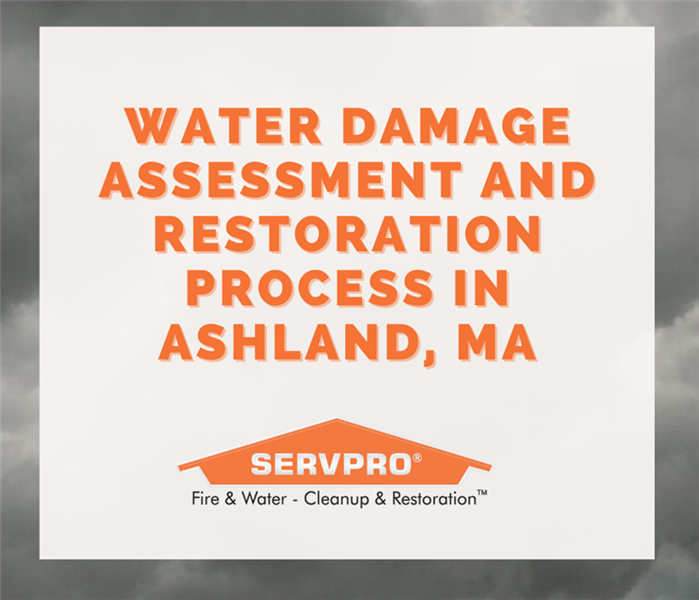Water Damage Assessment and Restoration Process in Ashland, MA
4/17/2024 (Permalink)
 Water damage can wreak havoc on your home or business, leading to structural issues, mold growth, and potential health hazards.
Water damage can wreak havoc on your home or business, leading to structural issues, mold growth, and potential health hazards.
Water damage can wreak havoc on your home or business, leading to structural issues, mold growth, and potential health hazards.
Understanding the water damage assessment and restoration process is crucial for effectively mitigating damage and restoring your property to its preloss condition. Let’s explain the steps involved in assessing water damage, including inspection, water removal, drying, and restoration. We will also discuss the importance of acting quickly to prevent further damage and mold growth.
Step 1: Inspection
The first step in the water damage restoration process is to conduct a thorough inspection of the affected area. This involves identifying the source of the water damage, assessing the extent of the damage, and determining the best course of action for restoration. A professional restoration technician will use specialized equipment, such as moisture meters and thermal imaging cameras, to assess the moisture levels in the affected materials and detect hidden pockets of water.
Step 2: Water Removal
Once the inspection is complete, the next step is to remove standing water from the property. This may involve using pumps, wet/dry vacuums, and other water extraction equipment to remove water from floors, carpets, and other surfaces. It is important to remove water quickly to prevent further damage and mold growth.
Step 3: Drying
After the water has been removed, the drying process begins. Industrial-strength air movers and dehumidifiers are used to dry out the affected area and restore humidity levels to normal. This step may take several days, depending on the extent of the damage and the type of materials affected.
Step 4: Restoration
Once the affected area is thoroughly dried, the restoration process can begin. This may involve replacing damaged drywall, flooring, or other materials, as well as repairing any structural damage. The goal of the restoration process is to return the property to its preloss condition and ensure that it is safe and habitable.
Importance of Acting Quickly
Acting quickly is essential when it comes to water damage restoration. Water damage can worsen rapidly, leading to further damage and mold growth if not addressed promptly. By taking immediate action and contacting a professional restoration company, you can minimize the damage and expedite the restoration process.
The water damage assessment and restoration process is a complex and multifaceted process that requires expertise and specialized equipment. By understanding the steps involved in the process and the importance of acting quickly, you can effectively mitigate water damage and restore your property to its preloss condition. If you are dealing with water damage, contact a professional restoration company for immediate assistance.
When disaster strikes your home or business, trust SERVPRO of Framingham as the premier choice for comprehensive cleanup and restoration services. With unparalleled expertise, our professionals swiftly respond to any fire, mold, water, or storm-related damage, ensuring your property is restored to its preloss condition with meticulous attention to detail. Whether it's a residential or commercial property, SERVPRO of Framingham delivers unmatched quality and reliability, making us the go-to solution for all your cleanup and restoration needs.
Service Areas
Framingham, MA | Sudbury, MA | Hopkinton, MA | Ashland, MA | Holliston, MA | Nobscot, MA | Framingham Centre, MA | Saxonville, MA





 24/7 Emergency Service
24/7 Emergency Service